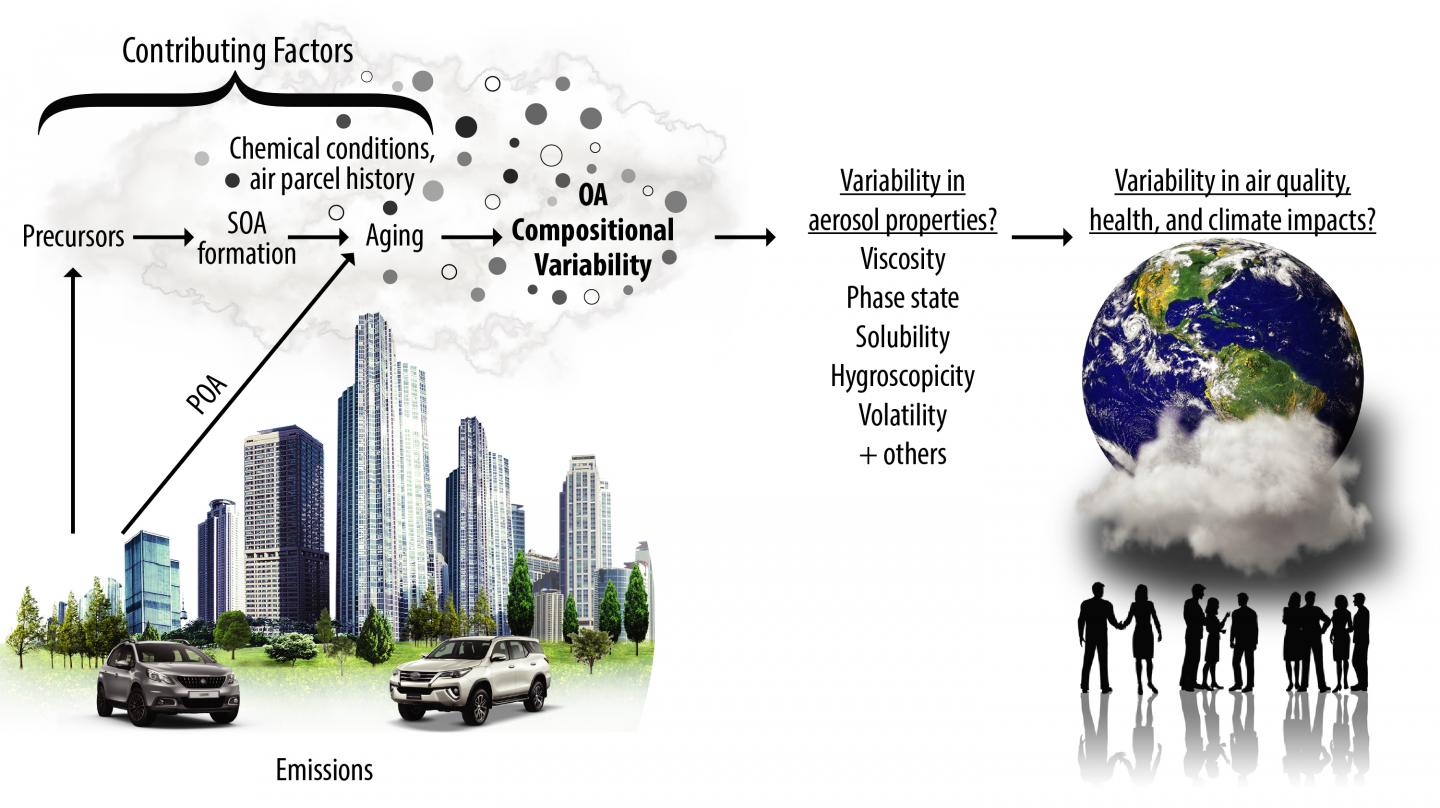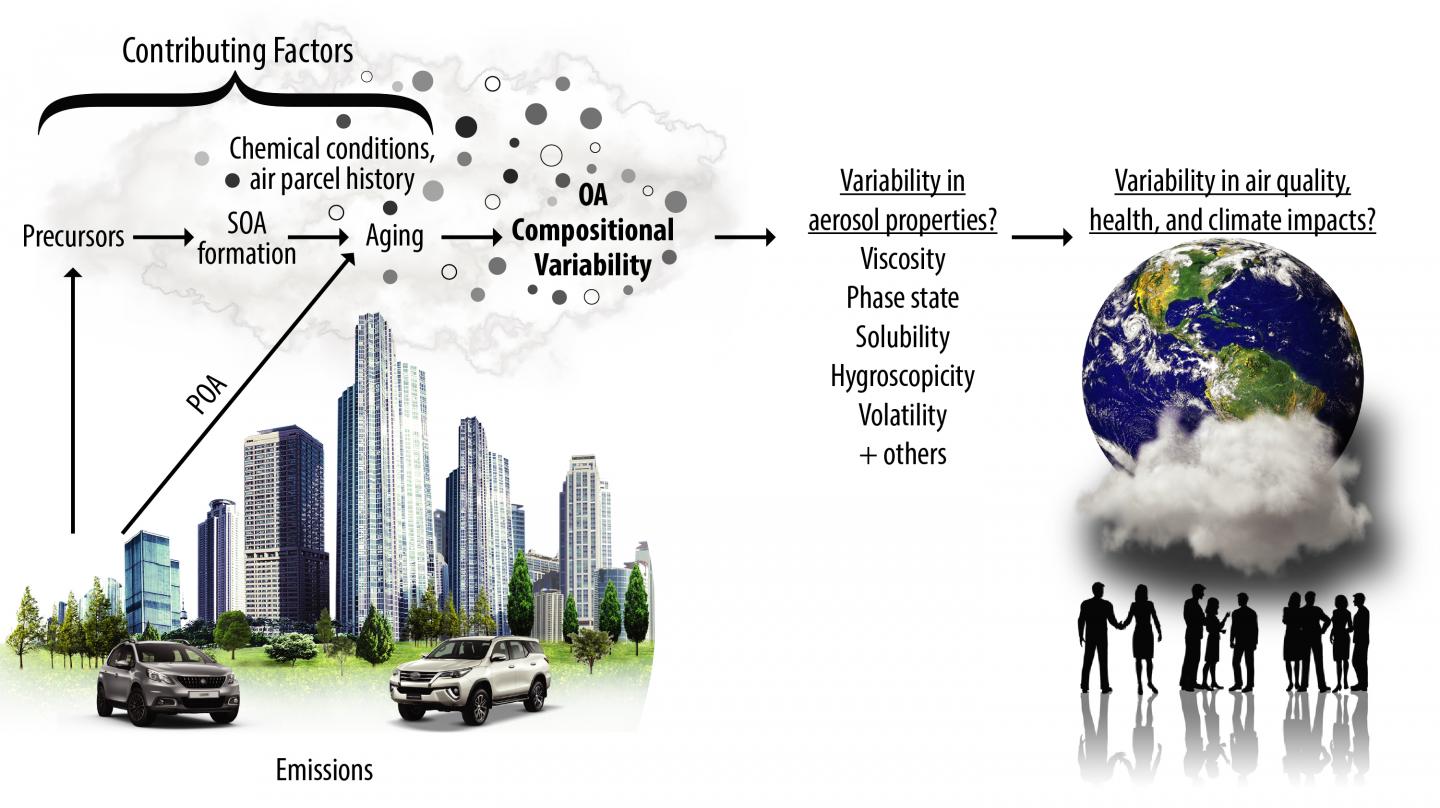
Credit: Yale University
New Haven, Conn. – Yale researchers have found that a type of air pollution is much more complicated than previous studies indicated.
Using high-powered equipment to analyze air samples, the researchers were able to get a detailed look at the molecular makeup of organic aerosols, which have a significant presence in the atmosphere. Posing risks to health and climate, these airborne particles generally fall into two categories: Primary organic aerosols that can form during combustion, such as in car and truck exhaust, and secondary organic aerosols that result from oxidation of organic gases and particles in the air.
For the study, published Nov. 2 in Nature's Communications Chemistry, the researchers used a combination of liquid chromatography, which separates thousands of compounds in a sample, and a mass spectrometer, which identifies and analyzes those compounds.
"Here, we can actually differentiate molecules that would otherwise appear to be very similar," said the study's senior author, Drew Gentner, assistant professor of chemical & environmental engineering. "In past studies, they had less information on molecular identities across the complex mixtures present. With these instruments, we can determine molecular formulas with more accuracy."
That's a significant advancement, the researchers note, since knowing what harmful elements are in the air is critical to finding ways to reduce them, added Gentner.
"If you develop an air pollution control policy based on less specific information for organic aerosol, there may be much more variability in the molecular-level composition than you might expect, which could influence aerosol properties and impacts," said Jenna Ditto, a Ph.D. candidate in Gentner's lab and lead author of the study.
Collected over three weeks at each site in the summer, samples were taken from a forest in Michigan, and from urban environments in Atlanta and New York City. Most surprising, said the researchers, were the variations they saw in samples taken from the same sites. In most cases, up to 70% of the compounds at a site were distinct from each other in consecutive samples.
Even if certain causes remain constant, the researchers said, a number of factors could be driving the variability. "The different types of compounds emitted from cars and plants could vary from car to car or tree to tree," Ditto said.
Other factors, such as weather patterns and chemical oxidation conditions can also change. Individually, these variations are usually slight, but they can add up to significant differences, said the researchers.
Building off of this study, the researchers said they expect to analyze the results further to get a better sense of what types of health and climate effects these variabilities may pose.
"There's a wealth of information in these details for the field to use," Gentner said. "There's valuable data that you can capitalize on to understand what's happening in the whole complex system."
###
Media Contact
William Weir
[email protected]
203-432-0105
@yale
http://www.yale.edu
Related Journal Article
http://dx.doi.org/10.1038/s42004-018-0074-3





